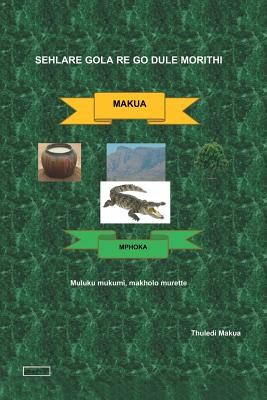
- We will send in 10–14 business days.
- Author: Thuledi Makua
- Publisher: Xlibris UK
- ISBN-10: 1543488846
- ISBN-13: 9781543488845
- Format: 15.2 x 22.9 x 3.4 cm, softcover
- Language: English
- SAVE -10% with code: EXTRA
Reviews
Description
Makua immigrated into Central and Southern Africa during the thrust of the southward Bantu migration between AD 100 and AD 400. The South African Makua population are centering on the present Mpumalanga and Limpopo provinces. According to Batilo et al. (1997, p. 25), This location coincides with the area in which the origins of Sotho-Tswana culture is presumed to have emanated before their migrations around 1300 to the Vaal area and later to their present habitats. The intention of this book is to trace the descendants of Makua in South Africa. The focus of this book is on the descendants of Sehlare Makua. Though this book is still in the process of searching most of his descendants. A considerable amount of discoveries through annual Makua reunions have been made with regard to his descendants. The researcher is still studying who his grandparents, parents, siblings, wives, and children were. In the next edition of this book (which will be the fourth edition), the researcher intends to study Sehlare Makuas other wives and their descendants and Letlakanas brothers and their wives and their descendants. At the end, every Sehlare Makuas descendant shall be invited to come forward and appear among the pages of this book. Currently, Makua in South Africa is subdivided into Makua Segawane, Makua Segafa, Makua Hlabane, Makua Ledimo, and Makua Swaedi. This does not mean that there are many different Makua in the country, but these subdivisions emerged as they were naming each other according to their cultural and social activities.
EXTRA 10 % discount with code: EXTRA
The promotion ends in 20d.18:56:02
The discount code is valid when purchasing from 10 €. Discounts do not stack.
- Author: Thuledi Makua
- Publisher: Xlibris UK
- ISBN-10: 1543488846
- ISBN-13: 9781543488845
- Format: 15.2 x 22.9 x 3.4 cm, softcover
- Language: English English
Makua immigrated into Central and Southern Africa during the thrust of the southward Bantu migration between AD 100 and AD 400. The South African Makua population are centering on the present Mpumalanga and Limpopo provinces. According to Batilo et al. (1997, p. 25), This location coincides with the area in which the origins of Sotho-Tswana culture is presumed to have emanated before their migrations around 1300 to the Vaal area and later to their present habitats. The intention of this book is to trace the descendants of Makua in South Africa. The focus of this book is on the descendants of Sehlare Makua. Though this book is still in the process of searching most of his descendants. A considerable amount of discoveries through annual Makua reunions have been made with regard to his descendants. The researcher is still studying who his grandparents, parents, siblings, wives, and children were. In the next edition of this book (which will be the fourth edition), the researcher intends to study Sehlare Makuas other wives and their descendants and Letlakanas brothers and their wives and their descendants. At the end, every Sehlare Makuas descendant shall be invited to come forward and appear among the pages of this book. Currently, Makua in South Africa is subdivided into Makua Segawane, Makua Segafa, Makua Hlabane, Makua Ledimo, and Makua Swaedi. This does not mean that there are many different Makua in the country, but these subdivisions emerged as they were naming each other according to their cultural and social activities.


Reviews